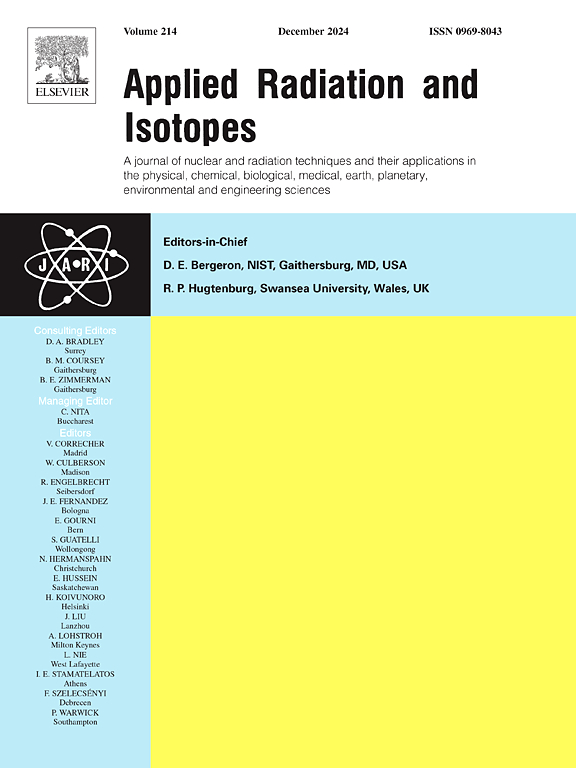A new boron-doped gas microdosimeter for clinical Boron Neutron Capture Therapy
IF 1.6
3区 工程技术
Q3 CHEMISTRY, INORGANIC & NUCLEAR
引用次数: 0
Abstract
The Next Generation EU project ANTHEM (AdvaNced Technologies for Human-centrEd Medicine) aims at building a new accelerator-based BNCT facility in Caserta, Italy. In this framework, a new miniaturized Tissue-Equivalent Proportional Counter (mini-TEPC) with boron-doped cathode walls was designed and constructed, specifically developed to be used in BNCT clinical centres. The size of its sensitive cavity is only 1 mm to cope with the high intensity of BNCT neutron fields. The new detector was tested in reference fields where the thermal neutron component is negligible (photons, protons and fast neutrons), showing the same response as another mini-TEPC with identical design but for the boron doping. First tests were then performed at the thermal neutron column of the research reactor of the Laboratory for Applied Nuclear Energy in Pavia, Italy, with both detectors. Measured microdosimetric spectra were consistent with previous data taken at other thermal neutron sources. This paper presents the design of the new mini-TEPC and discusses the results of these first tests.
求助全文
约1分钟内获得全文
求助全文
来源期刊

Applied Radiation and Isotopes
工程技术-核科学技术
CiteScore
3.00
自引率
12.50%
发文量
406
审稿时长
13.5 months
期刊介绍:
Applied Radiation and Isotopes provides a high quality medium for the publication of substantial, original and scientific and technological papers on the development and peaceful application of nuclear, radiation and radionuclide techniques in chemistry, physics, biochemistry, biology, medicine, security, engineering and in the earth, planetary and environmental sciences, all including dosimetry. Nuclear techniques are defined in the broadest sense and both experimental and theoretical papers are welcome. They include the development and use of α- and β-particles, X-rays and γ-rays, neutrons and other nuclear particles and radiations from all sources, including radionuclides, synchrotron sources, cyclotrons and reactors and from the natural environment.
The journal aims to publish papers with significance to an international audience, containing substantial novelty and scientific impact. The Editors reserve the rights to reject, with or without external review, papers that do not meet these criteria.
Papers dealing with radiation processing, i.e., where radiation is used to bring about a biological, chemical or physical change in a material, should be directed to our sister journal Radiation Physics and Chemistry.
 求助内容:
求助内容: 应助结果提醒方式:
应助结果提醒方式:


